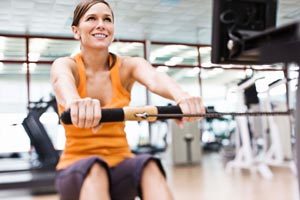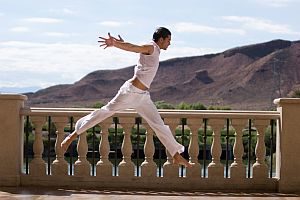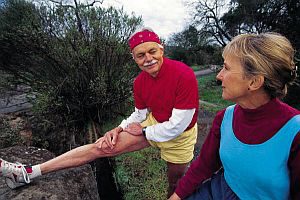Exercise Treats and Prevents Depression
 We all know physical activity can do wonders for lifting the mood, but new research shows that regular exercise may actually prevent the onset of depression.
We all know physical activity can do wonders for lifting the mood, but new research shows that regular exercise may actually prevent the onset of depression.
Although earlier research has demonstrated the positive effects of exercise on mental and physical health, there have been no major literature reviews analyzing the effects of exercise on the risk of depression.
Publishing in the American Journal of Preventive Medicine, PhD candidate George Mammen conducted the first longitudinal review of the effects of physical activity on mental health. The meta-analysis included 26 years of research including 30 peer-reviewed studies.
Even low levels of physical activity like walking or gardening for 30 minutes per day was enough to prevent depression, regardless of age. Although genetic predispositions can increase your risk of depression, the research shows that lifestyle habits can play a significant role in prevention.
“We need a prevention strategy now more than ever,” Mammen said. “Our health system is taxed. We need to shift focus and look for ways to fend off depression from the start.”
Of course, exercise has also been shown to prevent and reduce symptoms of chronic back pain, knee osteoarthritis, neck pain, migraine, and more.
“It’s definitely worth taking note that if you’re currently active, you should sustain it. If you’re not physically active, you should initiate the habit,” Mammen noted. “This review shows promising evidence that the impact of being active goes far beyond the physical.”
References
Moderate exercise not only treats, but prevents depression. Media Room. http://media.utoronto.ca/media-releases/moderate-exercise-not-only-treats-but-prevents-depression/
George Mammen, Guy Faulkner. Physical Activity and the Prevention of Depression. American Journal of Preventive Medicine, 2013; 45 (5): 649 DOI:10.1016/j.amepre.2013.08.001
Shared from the following website: https://www.chironexus.net/2013/11/exercise-treats-prevents-depression/


 Why “low impact” cardio exercises? Imagine reaching your “golden years” with a buff beach body only to be told that you can’t jog or run anymore because your knee cartilage has been worn thin or you have damaged vertebrae. The last thing you want to do is ruin your body while trying to stay in shape. Here we present some good low impact cardio exercises that can help you maintain a healthy cardiovascular system without causing damage to your musculoskeletal system.
Why “low impact” cardio exercises? Imagine reaching your “golden years” with a buff beach body only to be told that you can’t jog or run anymore because your knee cartilage has been worn thin or you have damaged vertebrae. The last thing you want to do is ruin your body while trying to stay in shape. Here we present some good low impact cardio exercises that can help you maintain a healthy cardiovascular system without causing damage to your musculoskeletal system.

 Studies have shown that one of the best ways to stick to your fitness regime is to have a reliable fitness partner. Being a fitness buddy means that someone else is counting on you to make them accountable for their workout, keep them inspired and ensure that they are not alone in their quest for fitness. To be a great fitness buddy you just need to keep a few basic guidelines in mind:
Studies have shown that one of the best ways to stick to your fitness regime is to have a reliable fitness partner. Being a fitness buddy means that someone else is counting on you to make them accountable for their workout, keep them inspired and ensure that they are not alone in their quest for fitness. To be a great fitness buddy you just need to keep a few basic guidelines in mind:

